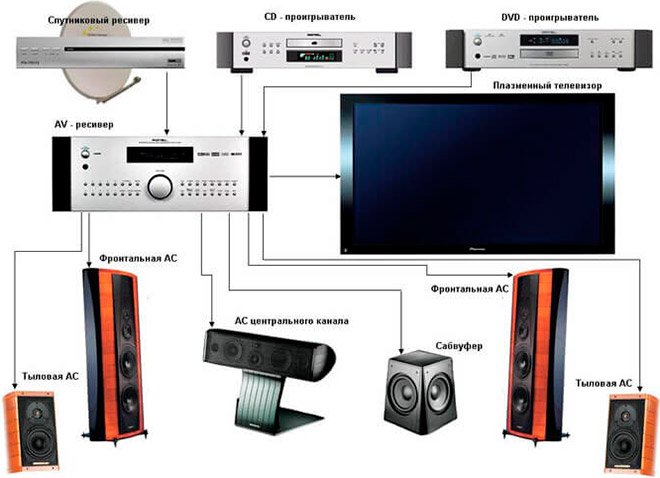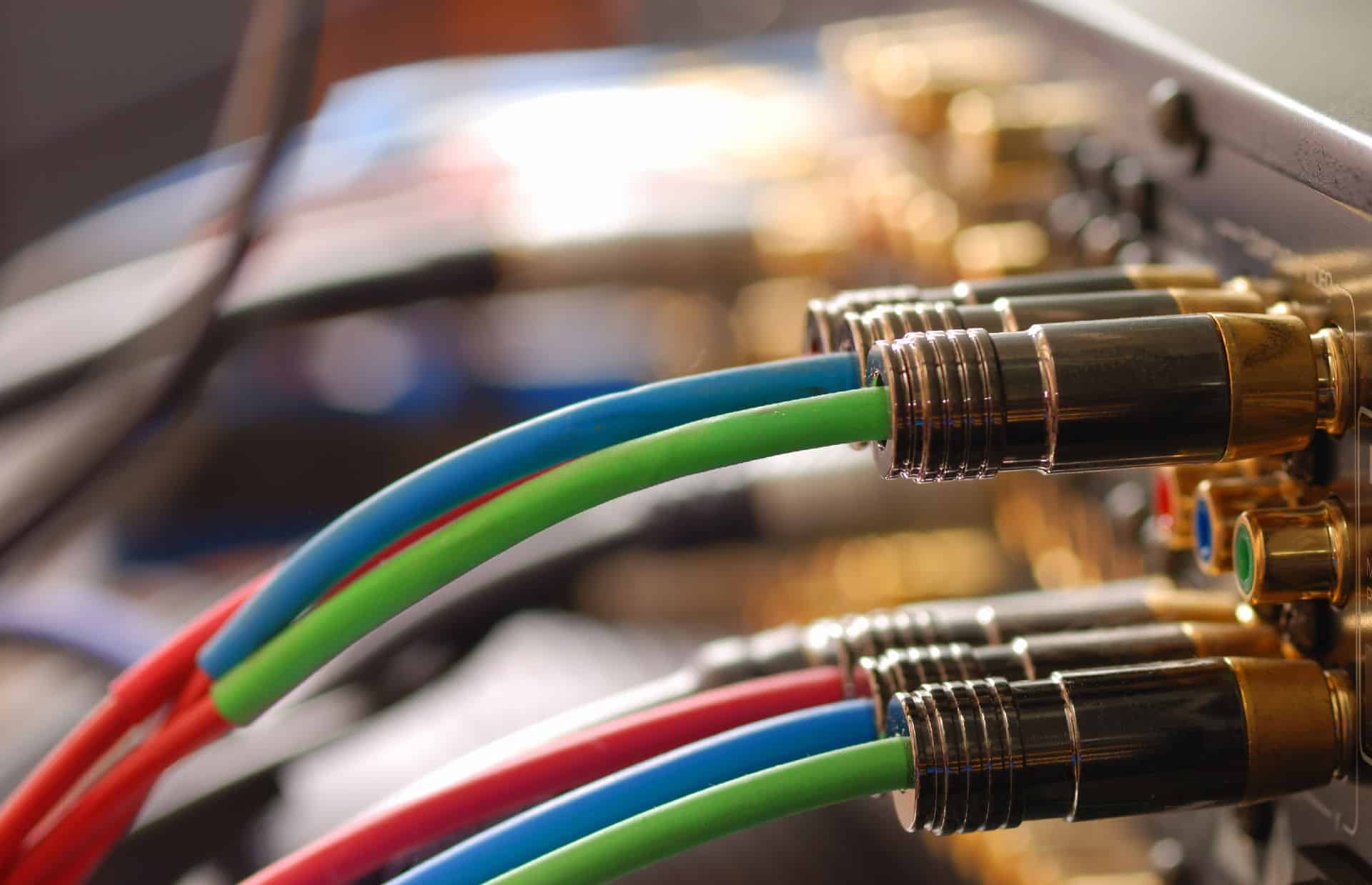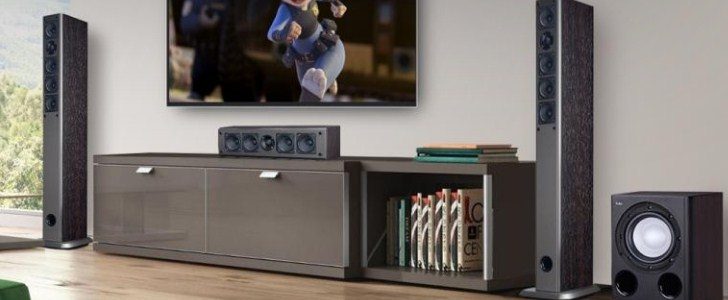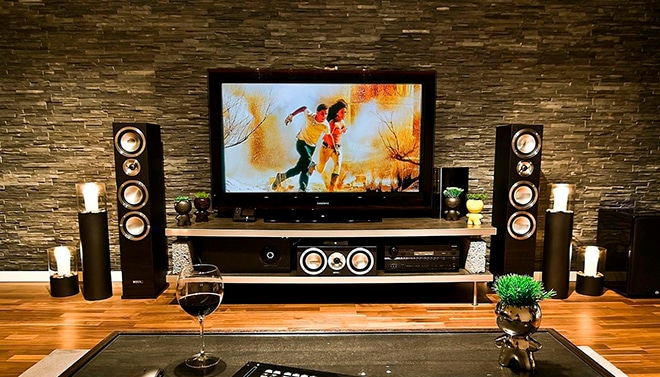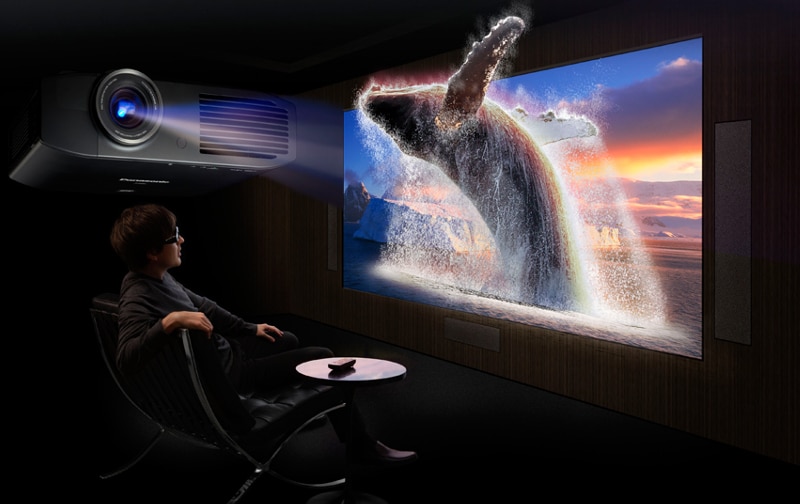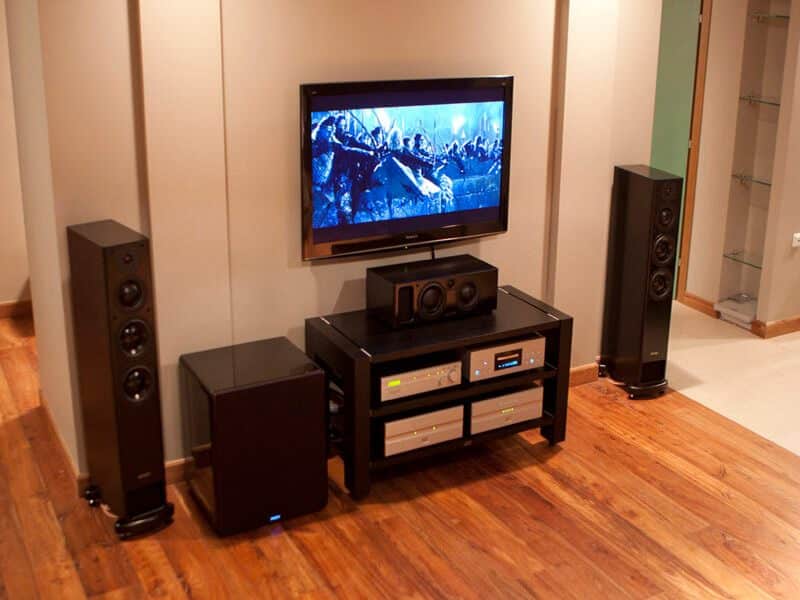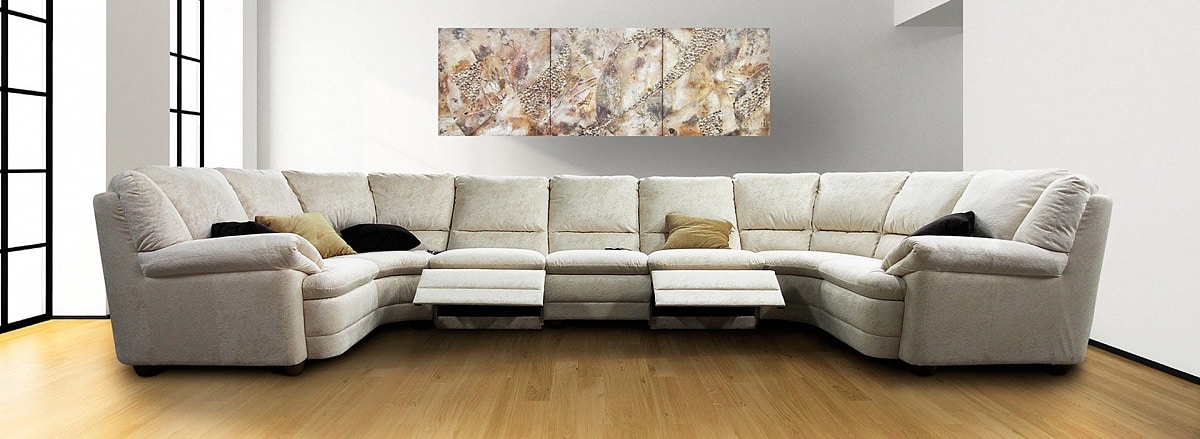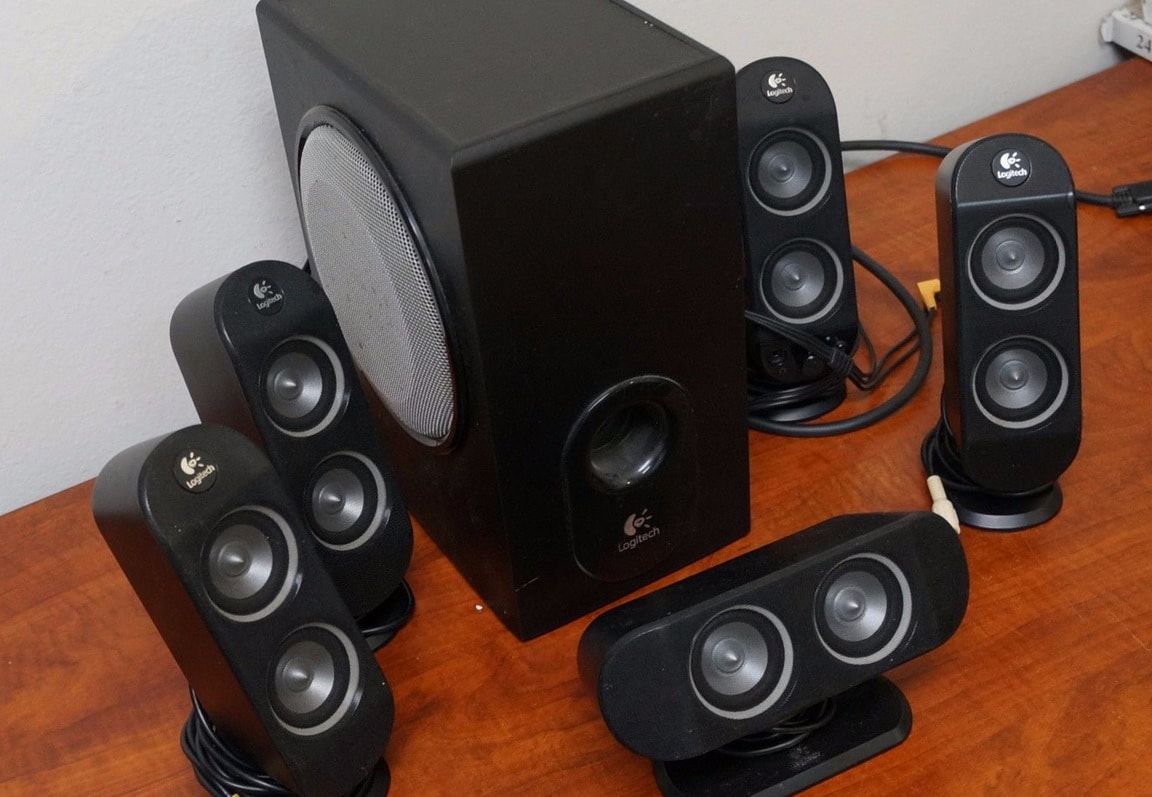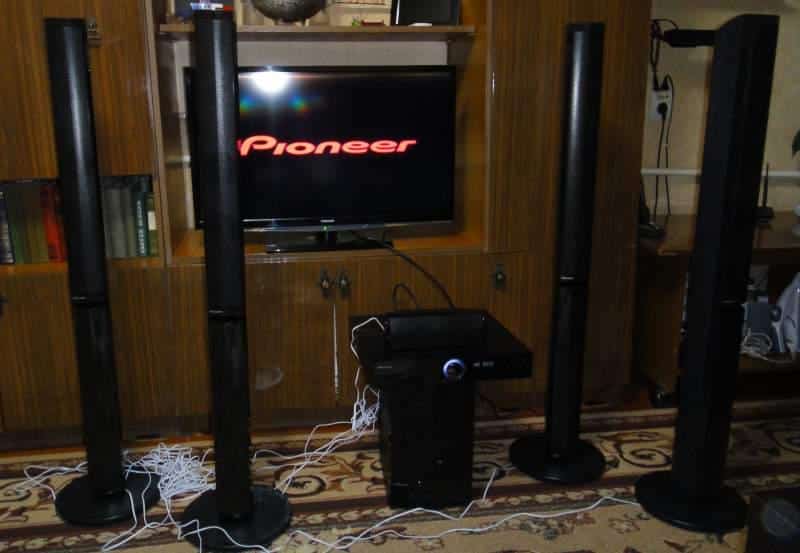When there is a
home theater in the home , viewers can enjoy high quality viewing. However, for this it is important not only to correctly install and configure, but also to make the initial connection. Even with high-end equipment, poorly selected and poorly connected wires can not only reduce the quality of work, but also lead to the inoperability of the system.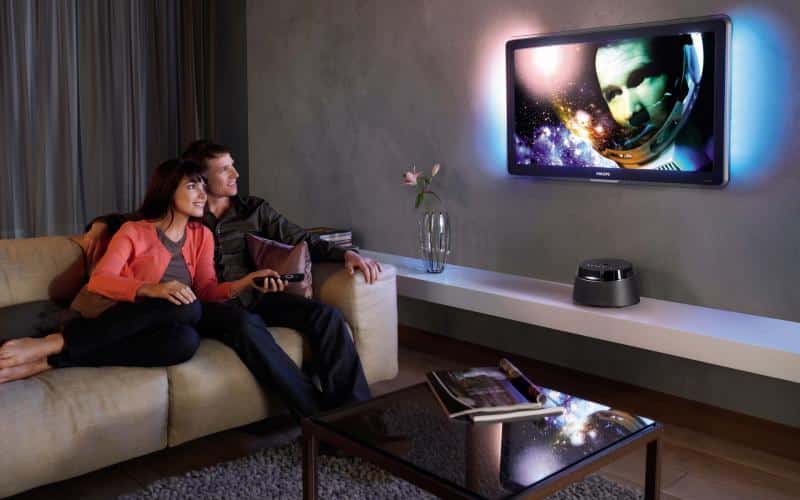
- What cables and wires are needed in order to connect a home theater
- Wiring diagram
- Home theater speaker cable
- AudioQuest Rocket 11
- Chord Company C-Screen
- QED Reference XT40i
- Chord Company Rumor X
- Van den Hul The Clearwater
- Power wire connection
- Video cable
- Connecting speakers in a home theater
- Optical cables
- Coaxial cables
- HDMI cable
- AUX cable
- How to connect
What cables and wires are needed in order to connect a home theater
To connect a home theater to a TV, you will need to buy and prepare speaker and fiber optic cables. When connecting, it is necessary to ensure the receipt of a video signal and an audio track, while the quality must be of high quality. It is necessary to avoid situations when, during the broadcast process, unexpected effects are superimposed on the video display due to interference. The speaker cable of the following varieties can be used:
- In symmetrical there are two electrical and ground wires. There can be several such sets of wires in one cable.
- Parallel includes two electrical wires, additionally covered with a common sheath. Additional protection reduces the risk of mechanical damage.
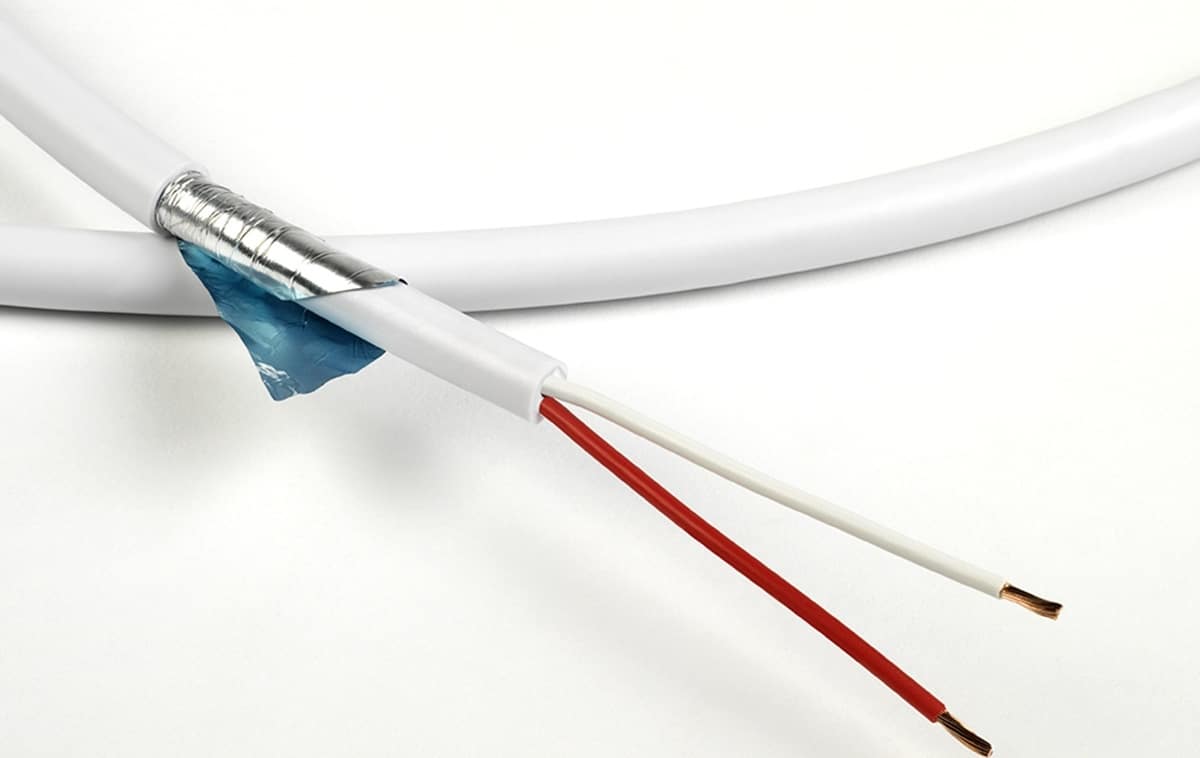
Parallel cable for connecting home theater speakers - A twisted cable has two twisted wires. This configuration can significantly reduce the signal strength even when transmitting over long distances. This type of cable is used for connections through connectors.

Home theater speaker cables – symmetrical, parallel - Coaxial cable has a special device. One of the electrical wires runs in the center. It is surrounded by a thick layer of insulation. Outside there is a metal conductive sheath. Outside is another layer of insulation.
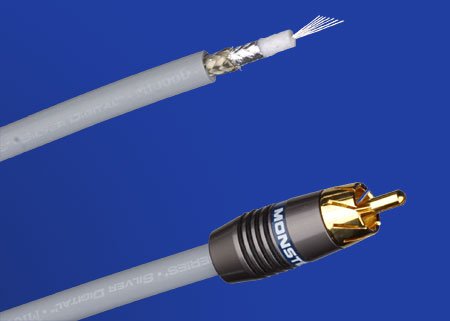
Home theater coaxial cord - Optical cable is usually made from fiberglass. For strength, a metal wire can be used as a reliable mechanical basis. Such a conductor provides high signal quality and reliable protection against interference.
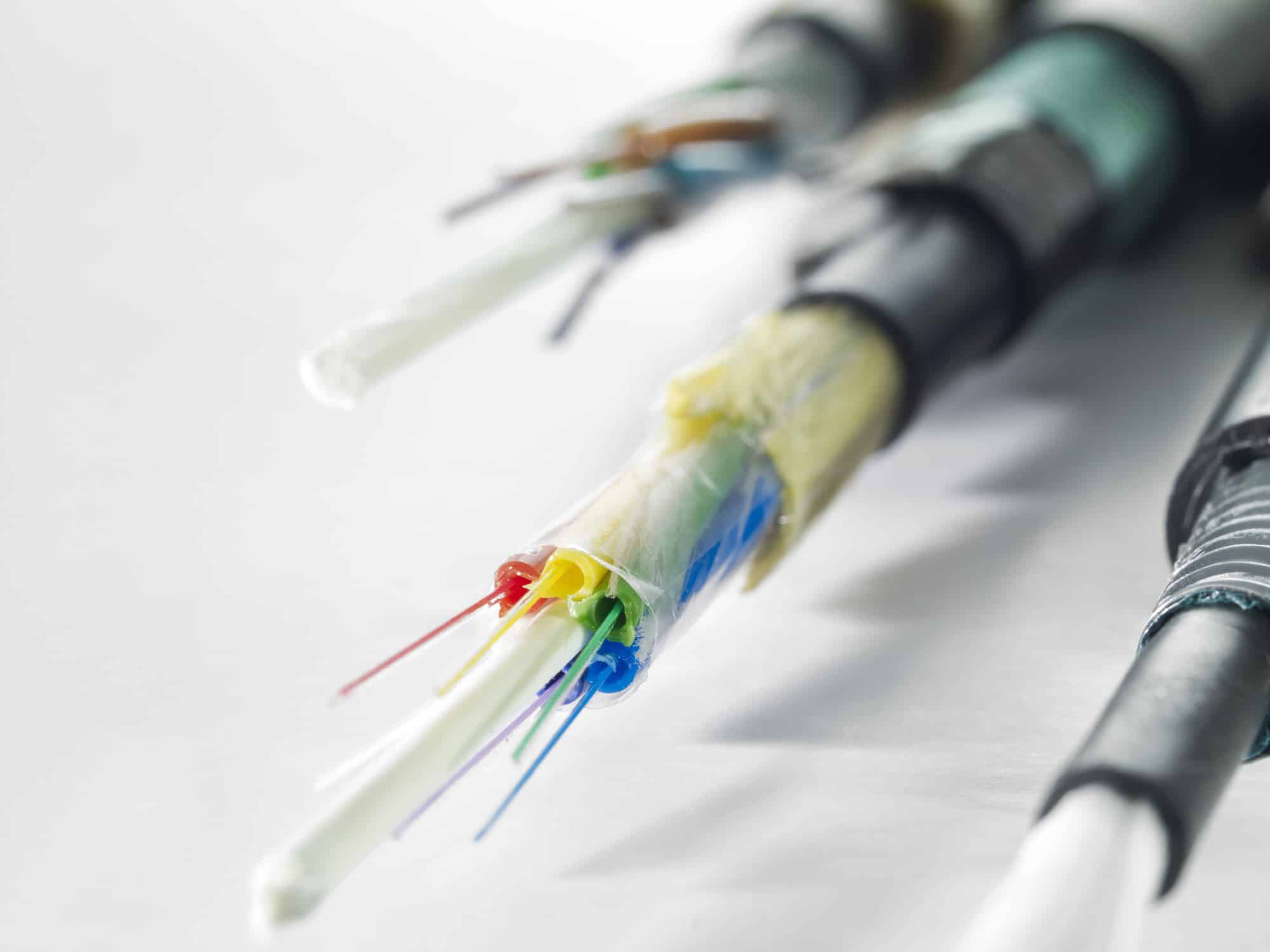
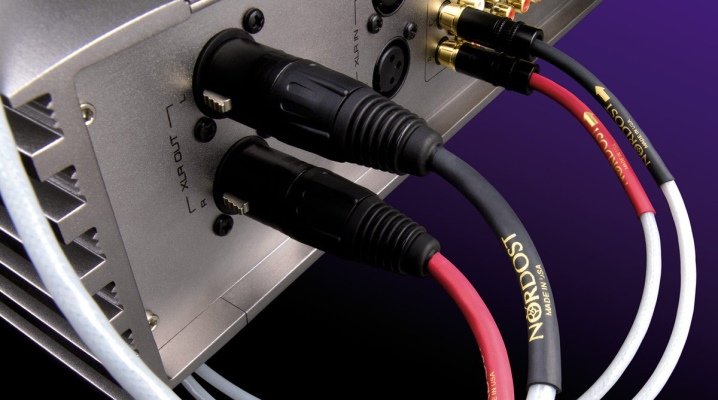 A high-quality cable is a guarantee of a high-quality picture and a decent sound [/ caption] When choosing wires, you should pay attention to their color. This does not matter for signal quality, but it is important for the home theater to match the design of the room where the viewing takes place. You also need to remember that you can use special connectors to secure the wires. If there is a need for them, you need to take care of acquiring them in advance.
A high-quality cable is a guarantee of a high-quality picture and a decent sound [/ caption] When choosing wires, you should pay attention to their color. This does not matter for signal quality, but it is important for the home theater to match the design of the room where the viewing takes place. You also need to remember that you can use special connectors to secure the wires. If there is a need for them, you need to take care of acquiring them in advance.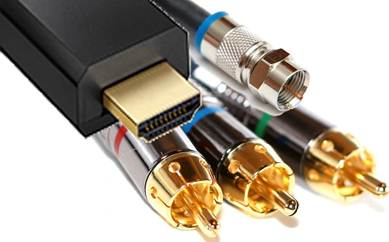 Cables can also be distinguished by their cross section. They are of the following varieties:
Cables can also be distinguished by their cross section. They are of the following varieties:- Round ones are the most widely used.
- Flat cables are cables of a similar structure, but they have a flattened shape. [caption id="attachment_5125" align="aligncenter" width="763"]
 Home theater audio cable – round, flat, ribbon
Home theater audio cable – round, flat, ribbon
 Despite the differences in appearance, it is believed that their quality is on the same level. However, the difference in shape allows the use of different laying methods. For example, for a flat cable, the following method can be applied:
Despite the differences in appearance, it is believed that their quality is on the same level. However, the difference in shape allows the use of different laying methods. For example, for a flat cable, the following method can be applied: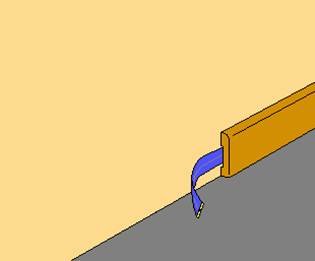
Wiring diagram
When connecting a home theater system, you must use wires to connect the following components:
- The TV screen is designed to display a video program. All the necessary equipment can be built into it – for receiving a signal from the antenna and for reproducing sound. However, in most cases we are talking about different devices.
- An audio system is needed to get high-quality sound. Even if the TV has built-in speakers, the sound level of the dedicated audio system will be higher. It will include an amplifier, speakers and a subwoofer to reproduce low frequencies.

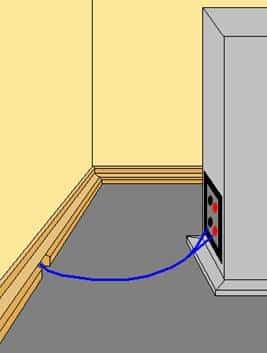
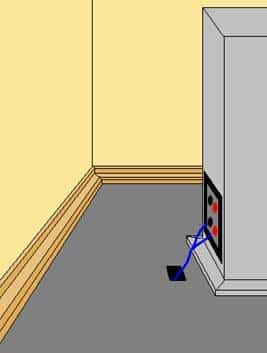
Home theater speaker cable
When choosing an acoustic cable, it is recommended to pay attention to those that have the greatest thickness. The thicker and shorter the conductor, the more quality sound is provided. It should be borne in mind that by placing the amplifier and speakers as close as possible to each other, it will be possible to increase the quality of the resulting sound. When installing the system, avoid creating areas where the cable is strongly taut. At the same time, if it is possible to reduce its length, it must be done. When choosing a speaker cable, you need to take into account the power passing through it. For example, if it reaches 100 W, then the cross-sectional area should be 2-3 square meters. mm or more.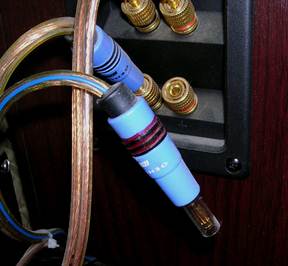
[caption id="attachment_5138" align="aligncenter" width="398"]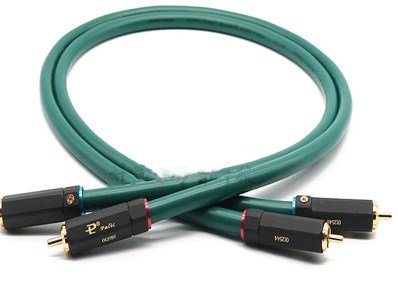 PCOCC Home Theater Cable
PCOCC Home Theater Cable
Most loudspeaker systems use copper wires, however for expensive systems silver wires can be used as noble metals have the best electrical characteristics and silver is the most affordable.
It is necessary to pay attention to what material was used for insulation. Most often, plastisol, polypropylene, polyvinyl chloride, and polyurethane are used for this purpose. The best insulation quality is provided by the use of Teflon. When using a stereo system, both cables must be the same length. This allows you to make the sound the most consistent. Choosing the right audio cable is very critical to sound quality. The following describes well-known manufacturers whose products can become a guide when choosing. TOP of the best cables for transmitting audio signals in a home theater
AudioQuest Rocket 11
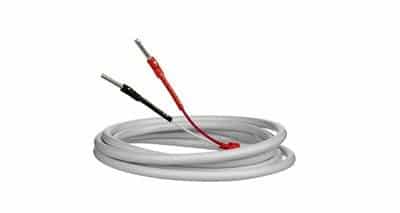 This brand of cable is considered one of the best. The product won the 2019 What Hi-Fi Magazine Award. Creates a flexible, precise and smooth sound. Works great with various devices. There is a marking that simplifies the switching procedure.
This brand of cable is considered one of the best. The product won the 2019 What Hi-Fi Magazine Award. Creates a flexible, precise and smooth sound. Works great with various devices. There is a marking that simplifies the switching procedure.
Chord Company C-Screen
Having high quality, this cable belongs to the budget segment of products. When using it, the sound sometimes feels warm and expressive, and in some cases the sound adds drive.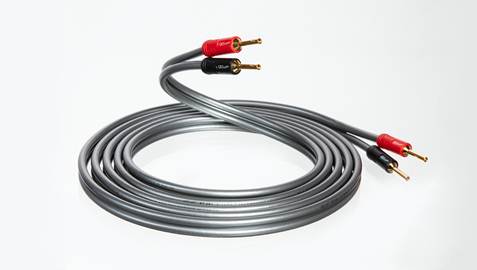
QED Reference XT40i
Owners of the QED Reference XT40i can enjoy the purest sound for cables in this price range. Detail and good elaboration will allow you to get the joy of audio playback.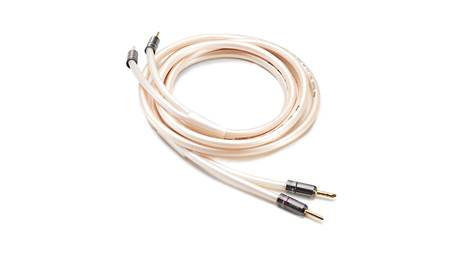
Chord Company Rumor X
Compared to budget models, this brand provides a cleaner and better sound, but the price differs slightly from them. It is best suited to owners of mid-range and entry-level speakers, allowing you to get the maximum available sound quality.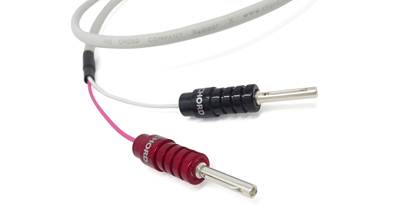
Van den Hul The Clearwater
The use of this cable allows you to get a powerful and clear sound. In addition to acoustic features, attention is drawn to the fact that a soft sheath is used, which makes it possible to conveniently position the cable even in hard-to-reach places. When listening to music, the viewer will feel emotional, complemented by coherence and balance of sound.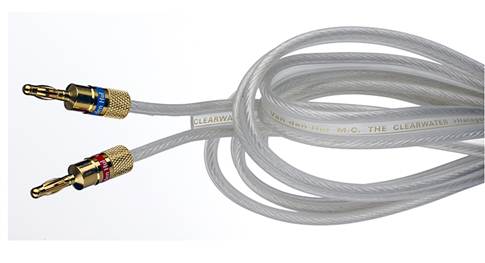
Power wire connection
The power cable is the least likely to affect sound quality. Its parameters are determined by the characteristics of the supply voltage. It should have a cross-sectional area for a home theater that corresponds to the required power of the equipment.
Video cable
When choosing a video cable, you must consider what connectors are available on the receiver and on the TV. The most common option is to use HDMI. If the desired type of connector is not available, you must use the appropriate adapter.
Connecting speakers in a home theater
Speakers can be arranged according to different layouts:
- The simplest is to use two speakers placed at equal distances from the listener. Such a scheme has the designation 2.0.
- The DC uses not only two speakers, but also a subwoofer, which is designed to reproduce high-quality low frequencies.
- For scheme 3.1, a central column is additionally used. Now the speakers are located not only on the sides of the listener, but also directly in front of him.
- Better sound quality can be achieved using a 5.1 stereo system. In this case, two speakers are located in front on the right and left, and two more on the back on the right and left, and one in front. The bass sound is provided by a subwoofer.
- At the location of 6.1, a center speaker is additionally added, located at the back.
- The highest quality sound is obtained when using 7.1. In this case, compared to 6.1, two surround back speakers are used.
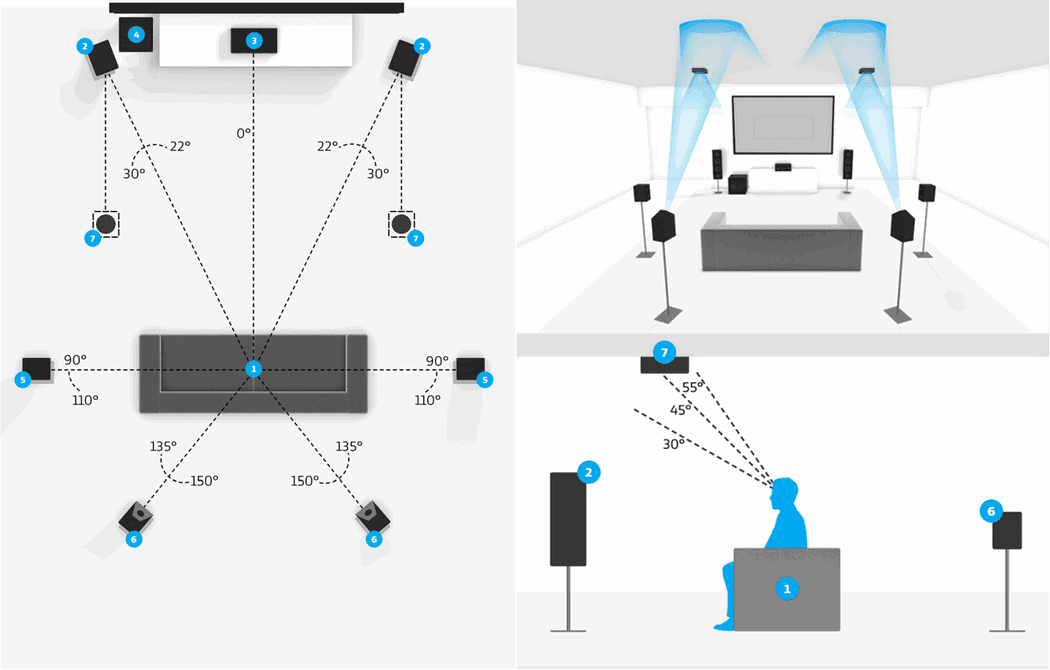
 Kimber Kable – American-made cable for connecting a home theater to a TV [/ caption]
Kimber Kable – American-made cable for connecting a home theater to a TV [/ caption]Optical cables
This type of communication is intended for the transmission of digital audio signals. It provides high sound quality and low attenuation, but is vulnerable to mechanical damage and requires careful handling.
Coaxial cables
They are used to transmit digital signals. Provide high quality work. The cable is resistant to pressure and kinks. [caption id="attachment_3206" align="aligncenter" width="488"] How a coaxial cable works
How a coaxial cable works
HDMI cable
HDMI cable is suitable for high-quality video and audio signal transmission. The disadvantage of such a cable is the deterioration of the transmission quality with an increase in its length.
AUX cable
AUX is used to work with analog audio signals. Using the line input, a player can be additionally connected. This cable is used to transmit sound to the audio system for playback.
How to connect
To get high-quality sound, you need to accurately position the speakers and subwoofer. The location is carried out in accordance with the following rules:
- The center speaker is placed next to or below the screen. In this case, it is necessary to ensure the shielding of the magnetic field from it and the connected wires. Otherwise, this speaker may cause interference.
- Front speakers are placed on different sides of the TV. It is necessary that the distance to the screen is not less than 50 cm. These speakers transmit the bulk of the sound and must be of sufficiently high quality for this.
- Rear speakers can be placed behind or to the sides of the viewer. Some install their speakers in the direction of the nearest wall, believing that the background sound reflected from it will work better.
- The subwoofer can be located where it is more convenient. This is not critical for the quality of low-frequency reproduction. It is only important to avoid its location in the corner of the room.
